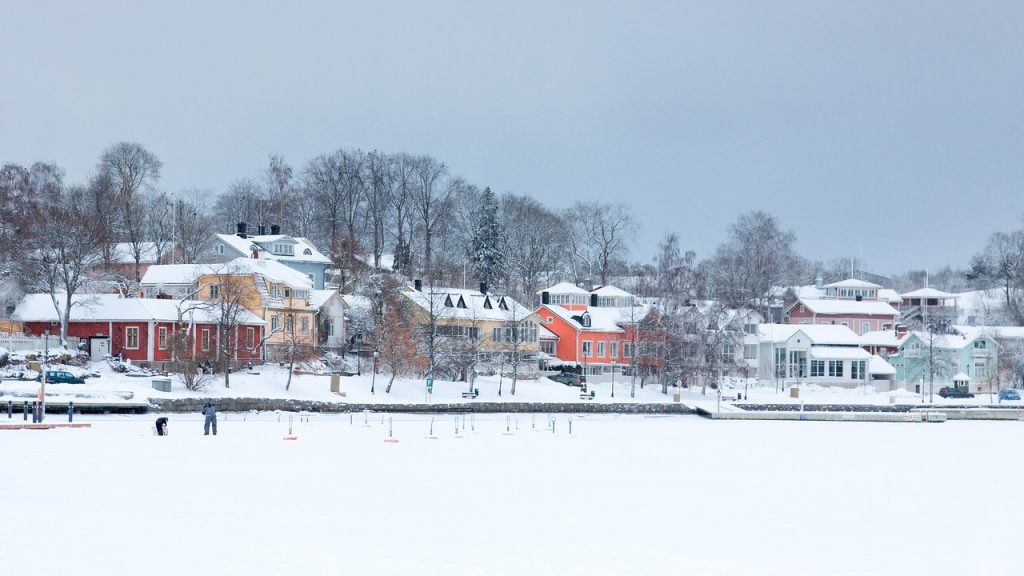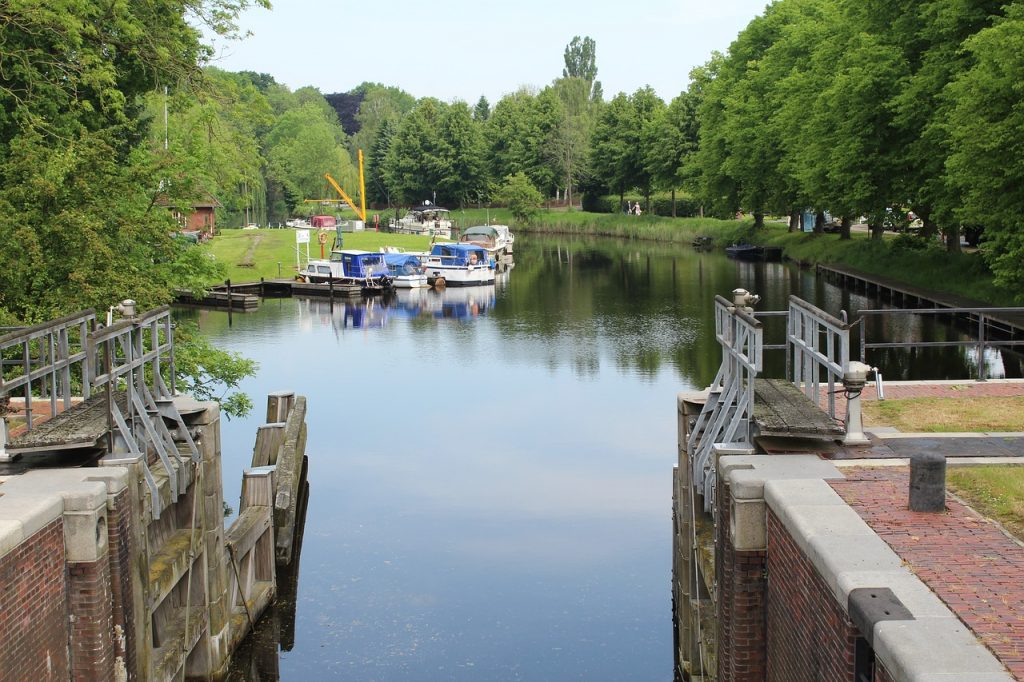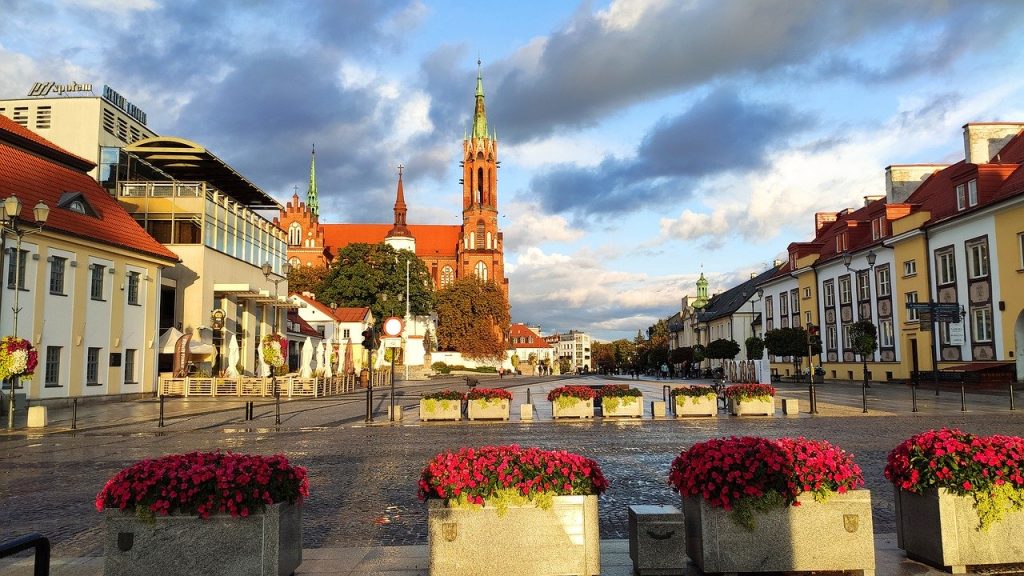Gdańsk is a tourist city with beautiful historic buildings, which attracts almost as many visitors as Krakow’s old town. Together with Gdynia and Sopot, it forms a Tri-City known for the whole of Poland. Unlike Gdynia, which mainly serves as a port, and Sopot, which is known as a summer resort, Gdańsk is a large city with old tenement houses and a history that left it all. Moreover, Gdańsk has a fantastic cultural base. Therefore, tourists, even the lazy ones, eagerly enjoy these attractions. Museums, the Baltic Opera, the Philharmonic and numerous cinemas and theaters attract many tourists both in summer and winter.
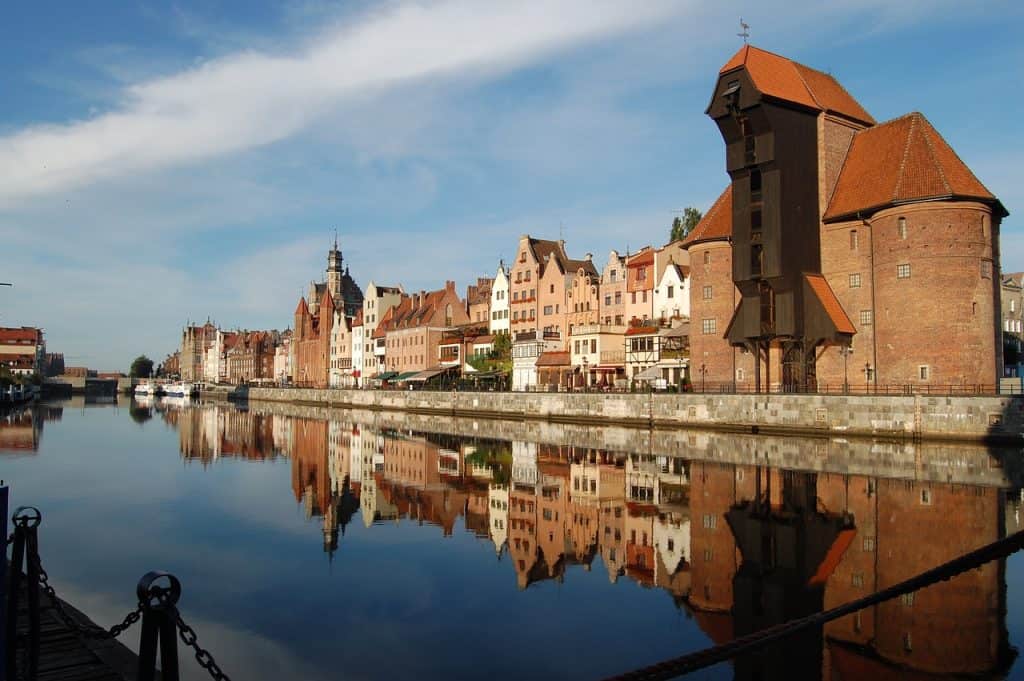
Gdańsk’s attractiveness increases even more thanks to its location on the Baltic Sea. All winter sports enthusiasts will surely find their place here.
Currently, Gdańsk is not only an important cultural and academic center, but also a dynamic economic center, developing in many directions. In addition to the traditional shipbuilding industry and the production of amber articles, Gdańsk has also focused on the fuel, electronic and telecommunications industries. The seaport and the international airport make Gdańsk one of the most important communication nodes in the country.
Location
Gdańsk is a provincial city, and more precisely the seat of the Pomeranian Province. It functions as a poviat, in the area of Żuławy Wiślane and the Kashubian Lake District, at the mouth of the Vistula to the Bay of Gdańsk. Moreover, together with Gdynia and Sopot, it forms the famous agglomeration called the Tricity.
Gdańsk is located on the Gdańsk Bay, a part of the Baltic Sea, closed from the north by the Hel Peninsula. The oldest parts of the city are located on the Motława River, one of the arms of the Vistula River, which branches off into the sea into several arms. It is worth taking a walk along its shores, where the famous Gdańsk Crane is located, and see the picturesque granaries and houses on the islands on the Motława River.
Currently, the entire Tri-City is inhabited by over 750,000 people, including over 450,000 people in Gdańsk itself. In addition, it should be noted that Gdańsk is a typical academic city that attracts young people from the region and even from all over Poland.
The climate and landscape of Gdańsk
In Gdańsk, ecology is of great importance. This is evidenced by numerous pro-ecological investments. This approach to ecology is due to the fact that nature has been generous in this city. Located on the southern shores of the Baltic Sea, the city benefits from the picturesque surroundings of the Tri-City Landscape Park and the hills and lakes of the so-called Kashubian Switzerland.
Moreover, Gdańsk has as much as twenty-three kilometers of clean beaches. The city took care of organizing three bathing areas. In addition, there is also a 130-meter pier, an offer for amateurs of relaxation by the sea.
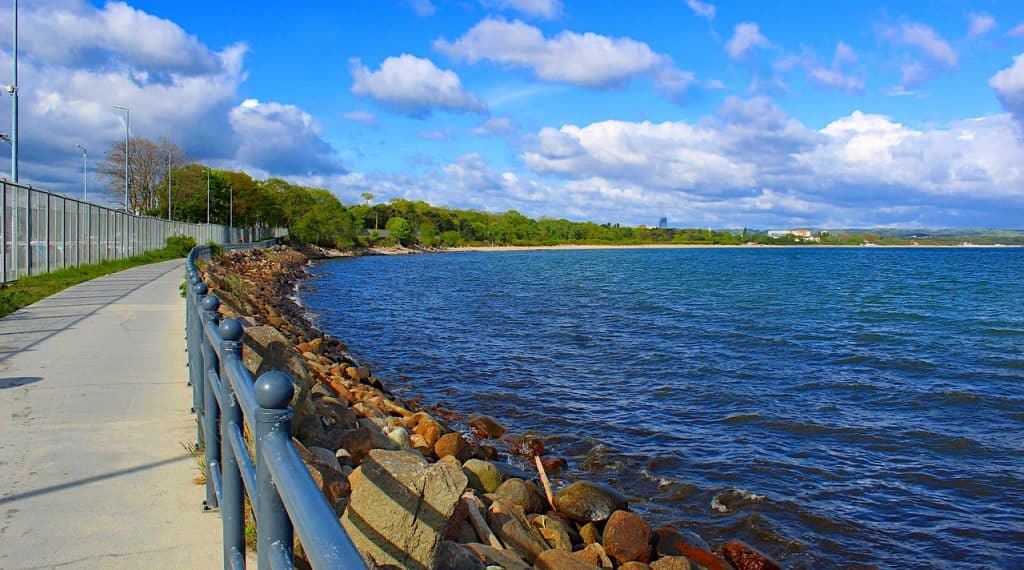
In addition, there are numerous parks and reserves to protect the natural environment. One of them is the Bird’s Paradise Reserve and Mewia Łacha. They are located on the Sobieszewo Island, which is one of the housing estates of Gdańsk situated on the island at the mouth of the Vistula River. These reserves provide shelter to as many as 300 species of birds and are a place of protection for rare vegetation, such as the red helleborine orchid and the seaside Santa Claus. This place adds charm to the Mierzei Forest growing on the north side with dunes in the coastal belt and two lakes, Karaś and Ptasi Raj. There is a nature and educational trail in the Ptasi Raj reserve, which is worth visiting as it is virtually unchanged by man and has the status of an ecological island.
The geographic location and topography have the greatest impact on the climate in a given region. Gdańsk is a place of very diverse landforms, which is why there are very extreme climatic conditions here. All this can be owed to the close presence of the Baltic Sea and the nearby hills.
As for the summer months, the presence of the sea favors a drop in temperature due to the cool breeze blowing from the sea. On the hottest days, when the wind blows from the west, the temperature in western districts can be up to 5 degrees higher than that recorded on the beaches.
The opposite is true during winter. This is due to the fact that the sea cools very slowly, so with the wind blowing from the east, it mitigates the temperature drop on the mainland.
Booking.comInteresting places for tourists in Gdańsk
Gdańsk offers tourists a number of interesting monuments to visit with their own history. Unfortunately, nowadays tourists prefer to take pictures rather than read about the history of these beautiful monuments. Therefore, in the Gdańsk Tourist Information Center, there is a possibility of sightseeing with headphones on. What does it mean? This means that you can rent a self-guide. Each tourist gets a map with marked monuments and when it comes to them, he can listen to the history and curiosities related to this place. Plus, there’s a more enriched version for true history fanatics.
If you talk about the monuments of Gdańsk, everyone immediately thinks of the historic Old Town. It is often confused with the Old Town. The Old Town is part of the Śródmieście district and it constitutes a compact historic complex. It is here that the most important monuments of the city of Gdańsk are located. These include, of course, St. Mary’s Basilica of the Assumption of the Blessed Virgin Mary, the Golden Gate and the Main Town Hall. In addition, the historic axis of the Royal Road, which consists of Długa Street and Długi Targ, is a characteristic and very well-known road. The Artus Court, which used to be a meeting place for merchants, and the Neptune Fountain, also deserve attention. As this part of the city is rich in ancient buildings, you can also see the Great Armory, the Court of the Brotherhood of Saint George, the Torture House with a prison tower and the Market Hall. In addition, there are many city gates in this area.

The most historic ones include the Upland Gate, the Golden Gate, the Green Gate and the Crane. You can also mention the St Mary’s Gate, Chlebnicka Gate, Krowa Gate, St. Ghost and Straganiarska. In addition to monuments of administrative or commercial importance, there are many sacred buildings and beautiful tenement houses that were built by the richest burghers. The most famous is the Golden House, decorated with gilded statues and bas-reliefs, and the English House, which as a Renaissance building was crowned with four gables and a turret with a spire. In addition, it is worth seeing the Uphangen House, Długi Targ 20, the House of the Natural Society and the House of Schluter. In addition, you can find numerous towers here. The entire historic complex is located on the west coast of the Motława River, thanks to which tourists can walk along its shores after the excess of historical facts, admiring the beauty of the buildings and moored ships.
When it comes to the Old Town, it is worth visiting such monuments as the Old Town Hall, the Great Mill and the Small Mill. In addition, the House of Pelplin Abbots, the building of the Polish Post Office and the historic Gdańsk Główny Railway Station deserve attention. The Preachers’ House and the Half-timbered House are also an interesting place. In addition to monuments, there are also historical monuments. These include the Monument to the Fallen Shipyard Workers from 1970, the Monument to King Jan III Sobieski, and the Monument to the Defenders of the Polish Post. In addition, in this area you can find many sacred buildings that delight with their architecture.
Moreover, it was in Gdańsk that the largest and most modern seaport was built, bearing the name of the Northern Port. As a result, the capital of the voivodeship has become a large center of the shipbuilding industry.
Gdańsk is not only about monuments and the history that unfolds around them, but also a large cultural center. It has theaters, an opera, a philharmonic hall and museums. Among them, it is worth mentioning the National Museum and the Amber Museum. Additionally, science is developing dynamically in Gdańsk, which is why there are numerous scientific institutes and several universities here.
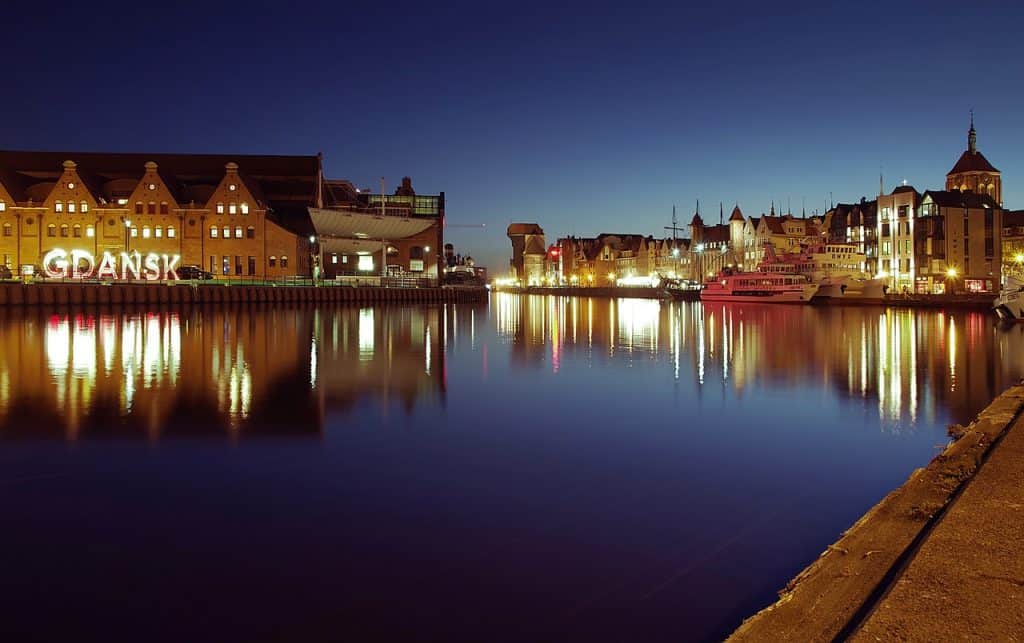
Attractions for tourists
Gdańsk attracts a lot of tourists interested in its history, but it is worth knowing that it is not only a cultural place, but also a real paradise for sports lovers. The capital of the Pomeranian Voivodeship is very well equipped with bicycle paths that run along and across at various levels of difficulty. In addition, there is a promenade right on the seafront, ideal for jogging and roller skating. It is very often used for ordinary walks on a Sunday afternoon.
In the heart of the old town there is a floating yacht marina. Water sports enthusiasts can practice them in the waters of Gdańsk Bay or on the Motława River, which is perfect for canoeing trips.
In addition, the Gdańsk Zoo and the Cultural Park of City Fortifications Twierdza Gdańsk with unique monuments of military architecture deserve attention.
Additionally, it is worth going to the Oliwa Park with its characteristic tree stand. The Oliwa Park covers an area of about ten hectares and is situated at the Oliwa Stream itself. It began to be built at the turn of the 12th and 13th centuries thanks to the Cistercian abbey in Oliwa. The monks wanted to give it a more decorative character in connection with the construction of the abbot’s residence, which now houses the Contemporary Art Department of the National Museum in Gdańsk. Abbot Jacek Rybiński has largely contributed to the modern appearance of the Oliwa Park. It was on his initiative that the building of the abbey palace and the so-called French part of the park, inspired by the baroque style, were built.
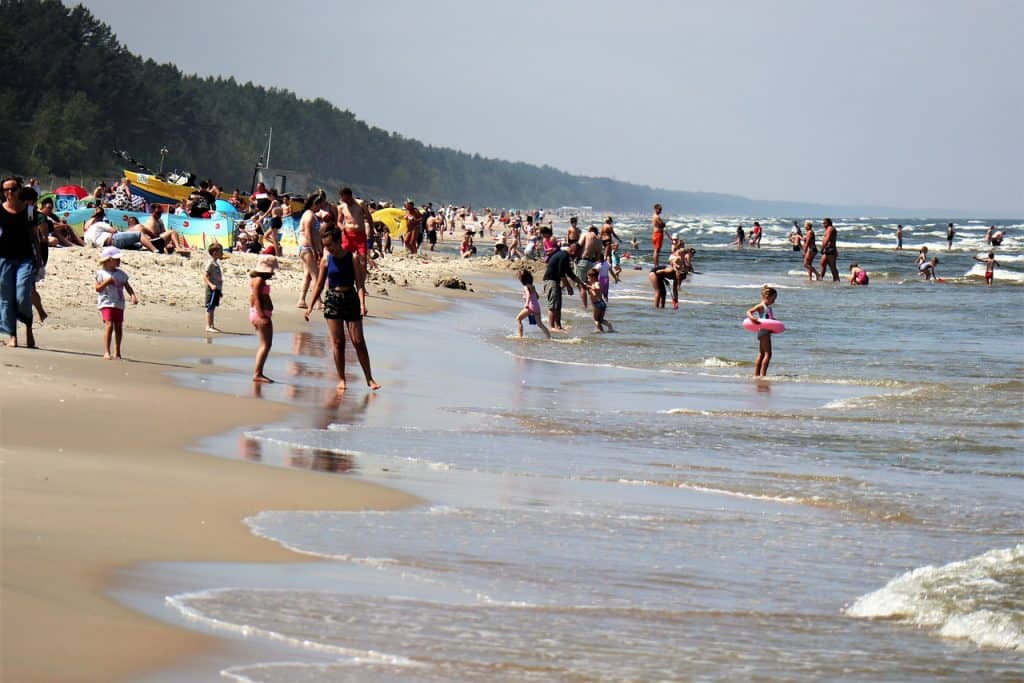
Additionally, in summer, Gdańsk’s beaches are full of tourists, lovers of water sports and beach volleyball. You could even say that the beaches become a real cultural center during the holidays. Numerous concerts are held here, theatrical performances are staged and a so-called summer cinema is created, which runs throughout the holidays. However, a good piece of advice from us – if you want to book your accommodation for a vacation in Gdansk, use the accommodation in Gdansk well ahead of schedule. The best places to stay are booked long before the holidays.
